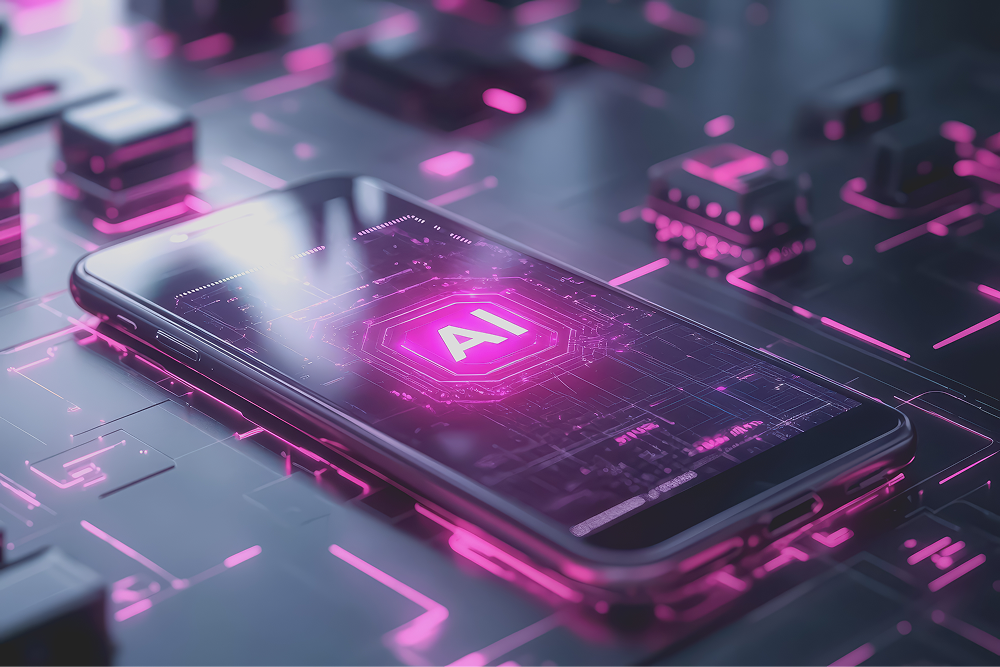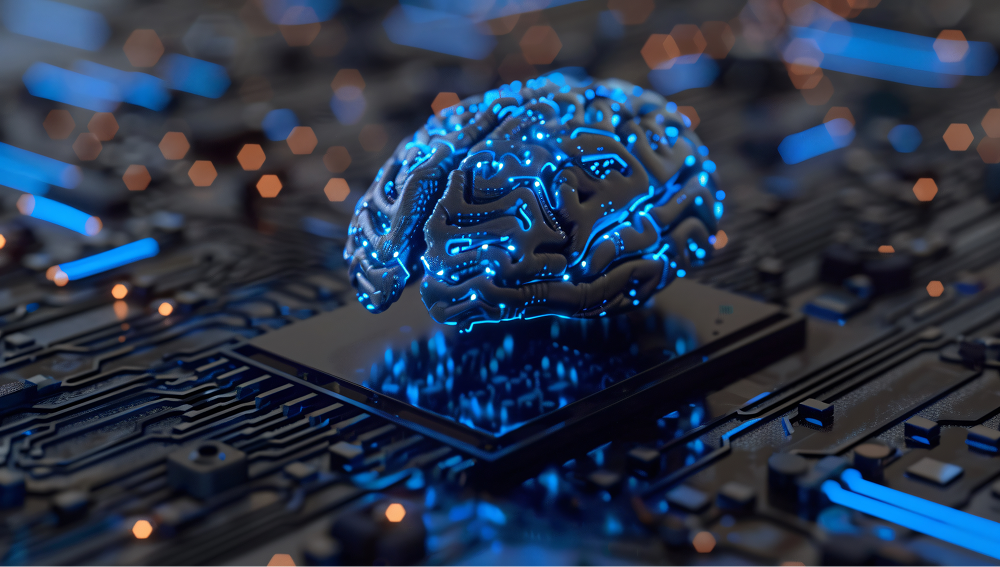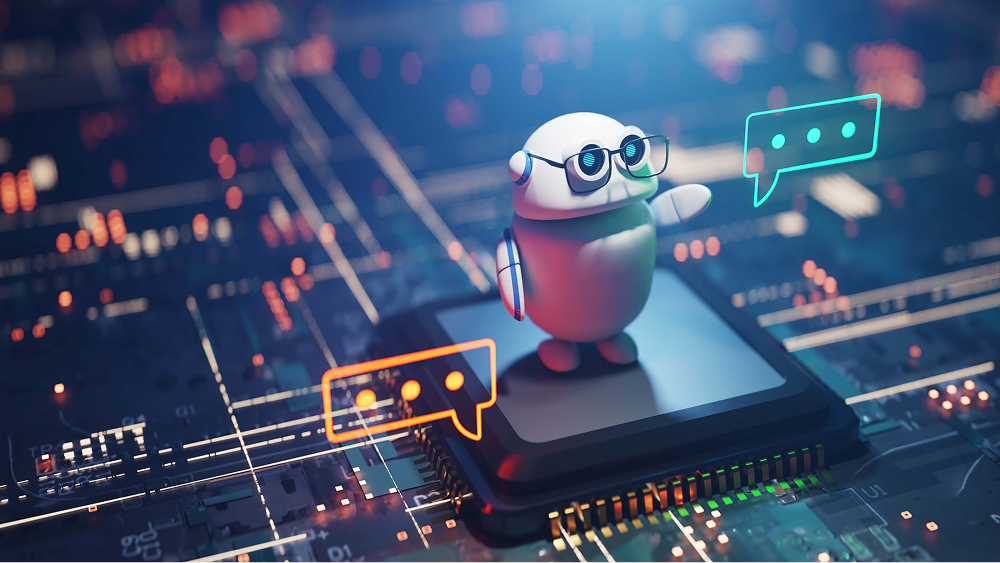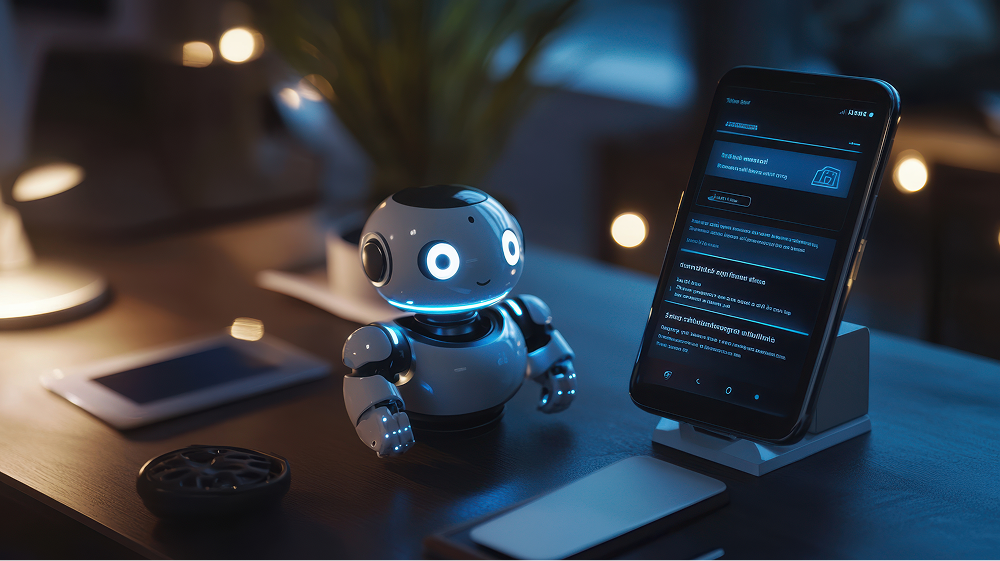Ready to take a step into the future and build your own AI-powered app? This guide will cover everything from developing a smart chatbot and predictive analytics tools to creating highly specialized AI apps. You’ll learn the key stages of the process—from defining project goals and choosing the right frameworks to training models and integrating them. We’ll break down complex concepts into simple, understandable steps so you can confidently begin development even without deep machine learning experience. AI is no longer a “technology of the future”—it’s a real tool for growing your business and creating innovative products today. Learn how to integrate cutting-edge AI tools, avoid common mistakes, and bring your vision to life. Whether your goal is a lightweight IA app or a robust enterprise platform, this article will show you exactly how to create an AI solution that delivers real value. Start your journey to build AI today and transform your ideas into intelligent reality.
What is AI?
Artificial intelligence (AI) is a field of science and technology that teaches machines to think and learn more like humans. Essentially, it’s the creation of computer systems that can analyze data, find patterns, and make decisions without step-by-step instructions. Examples are already all around us: AI recognizes faces on smartphones, translates text, understands voice commands, and even predicts future trends. The term ‘AI’ encompasses various fields— machine learning, deep learning, neural networks, natural language processing, and others. In simple terms, AI is programs that become ‘smarter’ over time: they learn from experience and gradually improve their performance without constant human intervention.
What are the Components of AI Applications?
Behind every intelligent AI app lies a set of core components that bring it to life. These elements don’t just power the system — they shape how it learns, thinks, responds, and grows. Let’s break down the essential building blocks that make AI apps function the way they do.
Learning
Learning is what allows AI to evolve over time. Instead of simply following predetermined instructions, AI looks for patterns in data and gradually changes. It’s like a digital version of trial and error: the system remembers what worked, discards what didn’t, and uses this experience to make more accurate decisions next time. Examples are all around us: AI recognizes road signs, helps banks detect fraud, or suggests a new music playlist you might actually like.
Logical Thinking
AI doesn’t “guess” — it calculates. The reasoning component gives the app its ability to weigh options, make connections, and select the best route to a goal. It compares known information, finds logical relationships, and builds conclusions. Whether identifying the cause of a system error or suggesting medical diagnoses, this logic is what keeps AI grounded in facts, not assumptions.
Strategic Problem-Solving
AI isn’t just smart — it’s strategic. Problem-solving is the brain of the operation. The AI defines the end goal, evaluates the current situation, and works step-by-step toward the solution. Sometimes, it uses flexible methods that can apply to a variety of tasks. Other times, it relies on a narrow focus to handle a specific job. Either way, it adapts quickly to new problems as they arise.
Perception and Sensing
What good is intelligence without awareness? This is the ability that allows AI to “see,” “hear,” and “feel” the world around it. Using cameras, microphones, and sensors, it receives raw data and immediately interprets it. Whether it’s tracking facial emotions or recognizing objects in a warehouse, awareness transforms a collection of signals into a true understanding of everything that is happening.
Language Interpretation
Language understanding helps AI to communicate like humans. It analyzes text and other content, understands questions, and generates replies. Natural language understanding (NLU) lets AI grasp context, detect emotions, and translate intent — not just words. This component is the reason you can ask a chatbot for help and get a helpful answer in plain English.
Each of these components plays an important part, but together, they make AI apps more than just tools — they make them adaptable, intelligent partners in solving real-world problems.

Different Elements of AI
There is no one trick or tool that makes up artificial intelligence. It is a combination of powerful technologies, each with a distinct function, that cooperate. These various components come together to give machines capabilities that previously appeared to be exclusively human. Here’s how each component contributes.
Machine Learning
The most well-known AI pillar is machine learning. By identifying patterns in data, it enables computers to learn on their own. Machine learning builds models that change with experience, in contrast to traditional programming, where each rule is hard-coded. This is how AI can identify questionable card transactions or forecast which movies will pique your interest. Unsupervised learning (discovering hidden relationships in data), supervised learning (using examples with correct answers), and reinforcement learning (where the system “learns from rewards and mistakes”) are some of the various methods. All of this makes AI more intelligent and practical with every new experience.
Neural Network
Neural networks advance machine learning capabilities by mimicking the information processing processes characteristic of the human brain. They are multilayered structures of small computing units—”neurons”—that work together to solve complex problems. These networks effectively process large and complex data, including recognizing faces in crowds and interpreting speech in noisy environments. They form the basis of automatic image tagging systems, voice assistants, and tools for forecasting financial market dynamics.
Robotics
While software runs the brain of AI, robotics gives it a body. Robotics merges sensors, hardware, and AI algorithms so machines can see, move, and react. In factories, robots zip along assembly lines, adjusting in real time to changes. In hospitals, surgical robots perform delicate operations with precision. Thanks to AI, robots today aren’t just programmed to repeat tasks — they adapt and respond, almost like living beings.
Expert Systems
Expert systems transform human knowledge into a machine that can solve problems. They employ rule-based logic to make recommendations or draw conclusions and retain extensive knowledge in a given field. These systems use “if-then” rules to trace their reasoning and provide an explanation for their decisions, which is different from typical software. They are therefore useful for diagnosing medical conditions or troubleshooting equipment.
Fuzzy Logic
Real life is messy. By working with shades of gray rather than binary responses, fuzzy logic assists AI in navigating that. Decisions appear more natural because fuzzy systems understand “warmish” or “slightly cool,” rather than just “hot” or “cold.” Smart thermostats, auto-focus cameras, and any other system that needs to handle uncertainty with human-like agility uses fuzzy logic.
Natural Language Processing (NLP)
Lastly, NLP makes it possible for AI to interact with people. It is the process by which computers understand text, interpret speech, and extrapolate meaning from nonliteral language. NLP makes it possible for a chatbot to ascertain your level of happiness or for a smart speaker to obey your commands. By analyzing grammar, context, and even emotion, natural language processing (NLP) converts human language into a form that a computer can comprehend.
Put all these components together — machine learning, neural networks, robotics, expert systems, fuzzy logic, and NLP — and you get AI that doesn’t just compute, but learns, reasons, senses, moves, and talks. That’s the real magic behind today’s smartest systems.
How does AI work?
Artificial intelligence might seem like magic, but under the surface, it’s a clever mix of data, math, and learning processes. At its heart, AI figures out patterns in data and uses them to make decisions or predictions — often faster and more accurately than we can.
At the heart of any AI-powered project is data collection. This could be images, handwritten notes, sensor readings, or previous sales statistics. The larger and more diverse the data set, the more effective the AI systems. AI systems analyze large data sets, identifying hidden trends, relationships, and anomalies that may not be obvious to humans. Through numerous training and testing cycles, a model is formed—a kind of map showing how input data relates to expected results.
A large portion of this process is driven by machine learning. Machine learning uses probability and statistics-based algorithms to train systems to get better over time. To find out what factors frequently result in approval, a program might, for instance, examine thousands of loan applications. With every example, it refines its internal rules, becoming more adept at identifying patterns.
Neural networks add another layer of sophistication. Modeled loosely after the human brain, they’re made up of interconnected nodes (like digital neurons) that process data in stages. By passing information through multiple layers, they can grasp complex, subtle patterns — recognizing a face in a crowd or distinguishing sarcasm in a tweet. Deep learning, which stacks many of these layers, makes it possible to tackle highly intricate problems, such as generating realistic images or translating languages.
Other subfields give AI additional powers. Computer vision helps machines understand pictures and video, letting them detect objects or read text from signs. Natural language processing teaches AI to grasp and produce human language, so it can summarize articles or chat with customers.
Several technologies work behind the scenes to make all this possible. Powerful processors handle enormous calculations at lightning speed. Vast streams of data flow in from connected devices, constantly updating the AI’s understanding of the world. Sophisticated algorithms crunch this data into insights. Even simple APIs allow developers to slip AI smarts — like image recognition or speech analysis — into everyday apps.
In the end, AI works by turning raw data into learned experience. With each cycle of training, testing, and refining, it edges closer to making human-like judgments, whether that’s recommending a movie or steering a self-driving car.

Traditional App vs. AI App
Traditional apps are similar to calculators in that they only perform the functions for which they are designed. When you type a command, a preset outcome is produced. Developers must rewrite the code if business rules change. Although these apps are dependable, they are not flexible because they are unable to learn from experience or comprehend context.
AI-powered apps are closer to a smart assistant. They analyze data, learn, and improve over time. Instead of rigid rules, they rely on machine learning models that adapt to new situations. Such software can predict your needs, warn you of risks, or adapt communication to your style. In essence, AI apps don’t just “react”; they evolve with you and your business.
AI apps genuinely customize experiences by examining user behavior and deriving insights from patterns, in contrast to traditional apps that only offer personalization through preset settings or preferences. They are able to create highly customized interactions by anticipating needs before the user expresses them.
Data processing is another major divider. Traditional applications follow clear instructions to manipulate data in structured ways — good for routine tasks like maintaining inventory or running payroll. AI-powered apps, in contrast, dive into vast, often unstructured datasets, picking out subtle trends or anomalies a human might miss. This capability is why AI excels at complex domains like image recognition or natural language understanding.
Even their approach to multimedia is different. A traditional app might store or display an image, while an AI app can analyze that image to identify faces, objects, or even emotional expressions.
In short, traditional applications stick to predefined scripts. AI apps write new ones on the fly. As businesses look to stay competitive, the move from static functionality to intelligent, evolving solutions isn’t just a trend — it’s quickly becoming the new standard for meaningful, dynamic user experiences.
Artificial intelligence applications in business
Artificial intelligence is changing the way companies operate, opening up access to smarter, faster, and more personalized solutions in almost every field. Unlike traditional systems with rigidly defined rules, AI learns from data and makes decisions based on it. This provides businesses with analytics and automation tools that help them remain flexible, efficient, and competitive.
- Customer service: It is among the most visible areas where AI has an effect. Routine consumer questions are answered by Chatbots and virtual assistants, cutting down on wait times and freeing up human agents to deal with more complicated problems. These tools make support interactions more seamless and intimate by using sentiment analysis to modify responses according to the customer’s mood and natural language processing to comprehend queries.
- Marketing: AI examines vast amounts of consumer data to find trends that inform marketing tactics. In order to maximize engagement, it customizes content and promotions to each user’s preferences, anticipates their next needs, and even determines when to reach out. This degree of targeting increases return on investment and fosters closer ties between brands and their target audiences.
- Sales and lead generation: Prospects are sorted by machine learning models, which then score the most promising leads for sales teams and suggest next steps. Businesses can focus their efforts and close deals more quickly by automating these procedures.
- Supply chain and logistics: AI effectively routes deliveries, optimizes inventory, and predicts demand. AI-powered predictive maintenance reduces equipment downtime, saving money and time. Algorithms for risk assessment also assist businesses in proactively handling disruptions.
- Finance: AI simplifies everything, including fraud detection and invoice processing. Algorithms look for anomalous patterns in transactions, identifying problems before they become serious. AI-powered compliance solutions also help businesses stay on top of constantly evolving rules.
- Human resources: It screens resumes, matches candidates to job requirements using NLP, and even predicts which employees might be ready for new roles. Recommendation systems can personalize training paths, keeping teams engaged and helping them grow.
AI’s business applications are growing quickly as it develops further, revolutionizing workflows, releasing efficiencies, and spurring creativity. Businesses that successfully use these tools are not only staying competitive, but are also establishing new benchmarks for how business is conducted.
What benefits does developing an AI application for a business offer?
Creating an AI app is more than a tech upgrade — it’s a way to strengthen nearly every part of a business. Here’s how it delivers real, practical value:
Sharper decision-making
AI turns raw data into clear insights. It spots patterns and trends faster than any manual report, helping managers make smart choices based on facts, not guesswork. Predictive models can even warn you about risks or highlight new opportunities before they fully emerge.
Flexible, tailored experiences
AI frees up workers for work that requires human judgment by managing time-consuming or repetitive tasks. Automation lowers expenses and minimizes errors in tasks like email sorting, document processing, and schedule management.
Operational efficiency and cost savings
AI frees up employees for work that requires human judgment by managing time-consuming or repetitive tasks. Automation lowers expenses and minimizes errors in tasks like email sorting, document processing, and schedule management.
Stronger security
AI doesn’t just follow static rules. It learns what normal activity looks like and flags unusual behavior, offering advanced protection against fraud or cyber threats. This is crucial for keeping sensitive data secure.
Better customer interactions
AI-powered chatbots and virtual assistants can handle routine questions instantly, guide users through problems, and even predict needs based on past activity. This proactive support makes customers feel valued and keeps them engaged.
Easy scaling and growth
AI systems can handle more data and more users without slowing down as demand increases. Businesses can expand without worrying about system overload because they effectively divide workloads and maintain the functionality of apps.
Staying ahead of competitors
Investing in AI positions a company as an innovator. It helps you react quickly to market changes, spot new trends, and serve customers in smarter ways. That edge can make all the difference in crowded markets.In short, building an AI app helps businesses work smarter, serve customers better, and prepare for long-term success. It’s a direct way to boost performance, security, and growth — all at once.

How to build an AI application?
Recognize the Issue
Every AI application begins with a precise understanding of the problem it intends to solve. Before touching data or code, it’s essential to define exactly why the app needs to exist. This entails closely analyzing the user or business pain point you are trying to solve and comprehending its larger context. Maybe your logistics operations experience erratic delays, or your customers regularly abandon carts as a result of poor recommendations. Identifying the core problem will determine the entire project trajectory, influencing the type of data you’ll need, the model you’ll build, and even how the final user experience should look. This step also involves outlining measurable objectives so you know what success will look like when you launch. For an AI project, it’s wise to think ahead to what metrics, such as accuracy or user adoption, will indicate your solution is truly delivering value.
Select the AI Model
Once the problem is clearly defined, the next task is choosing the right AI approach to solve it. This choice entails being aware of the type of predictions or judgments the app must make as well as the type of data you will be depending on. A supervised learning approach, which trains the model to predict future events or classify data points, may be the most effective method for problems where there is historically labeled data and outcomes are known. Unsupervised learning is more appropriate if the goal is to find hidden structures or organic groupings in the data. Reinforcement learning may be the best option in situations involving sequences of actions, such as customizing recommendations or training an agent to navigate. From here, you’ll determine the specific algorithmic architecture — whether simple decision trees, complex neural networks, or emerging generative models — that best aligns with the task. Choosing well at this stage means your application can achieve both technical feasibility and strong, reliable outcomes.
Decide on the Stack and Tools
Choosing a stack is a strategic decision that directly impacts development efficiency, scalability, and ease of maintenance for your AI applications. It’s a good place to start by analyzing the programming languages and frameworks best suited for working with AI models and the accompanying infrastructure. Python deservedly holds a leading position in the AI ecosystem thanks to its vast library selection and active community. This determines its choice for creating and training models. Depending on whether you’re developing a web app, a mobile solution, or a combined system, it’s important to properly align frontend and backend technologies. Selecting frameworks and libraries that make deployment and training easier is also crucial. TensorFlow or PyTorch, for instance, can expedite experimentation and provide strong optimization support. You’ll also plan the data layer and storage to handle your inputs and outputs, possibly incorporating traditional databases alongside modern vector or NoSQL databases if your app requires quick similarity searches or large-scale unstructured data processing. Selecting your stack is about balancing what fits your team’s skills, what meets your technical demands, and what positions your app to scale sustainably.
Create the UI/UX Design
Even the most well-known AI engine will be of no use if its appearance is confusing or inconvenient for users. An intuitive and responsive user experience is essential: it builds trust in your AI solution and motivates people to actively use it. This includes a clear description of how the user interacts with the app: what data they submit, how they obtain results, and how recommendations are presented. It’s important that the output is presented as clearly and visually as possible. Transparency is crucial. Users must understand how the AI works, especially when it comes to decisions that directly impact them. Your design should make the complicated work of artificial intelligence seem easy and accessible, whether it’s displaying trends in a visualization, producing conversational responses in a chatbot, or surfacing predictions in a dashboard. A good UI/UX design also anticipates where users may have questions, offering convenient ways for them to provide feedback or benefit from automated suggestions. This human-centered approach helps maintain a balance between complex technology and a comfortable user experience.
Construct the Application
Development begins in earnest at this stage, bringing together both the AI model pipeline and the broader application infrastructure. This process is where software engineering meets data science. You’ll implement the core functionalities of your app — setting up server environments, building out APIs, connecting databases, and coding the frontend logic that users will see. Parallel to this, you will build and train your AI model, conducting tests to improve accuracy and dependability. To ensure seamless integration in the future, each side needs to be carefully designed. Disciplined version control and clean, modular code aid in controlling complexity as the application expands. As development progresses, careful collaboration between engineers and data scientists ensures the AI component is tuned to deliver insights or actions precisely when and how the user needs them. At this stage, the foundational choices you made about architecture and stack start to pay off by streamlining development and reducing costly rework.
Implement Integration
The crucial stage of combining the elements comes after developing the main application and training a strong AI model. A stand-alone predictive model becomes an AI-powered application that users can actively interact with thanks to this integration. Decisions here include determining whether to process data on the user’s device, known as edge computing, or to send requests to a server or cloud environment where your model runs centrally. Each option carries trade-offs in latency, privacy, and computational cost. The integration step guarantees that user inputs can be processed by the app’s backend, routed through the AI system, and promptly returned with unambiguous outputs. Maintaining performance and keeping various app components decoupled but seamlessly interactive requires a strong API design. This is also where feedback loops are embedded, enabling the app to record user actions and results. Those logs later serve to further refine and retrain the AI model, steadily improving how well the application understands and serves its users.
Conduct Testing
After integration, it’s crucial to conduct thorough testing to ensure the AI application performs reliably in real-world conditions. AI systems can show unpredictable behavior, as their results depend on learned patterns that evolve with new data. Therefore, testing should cover not only technical features—the correctness of buttons, form submission, or data storage security—but also the operation of the model itself. It’s important to check whether predictions remain within acceptable limits, how consistent responses are across different inputs, and to simulate stress scenarios and edge cases that could confuse the system. Equally important is user testing: real or potential customers try out the application and evaluate its usability and usefulness. This approach helps identify whether the AI meets their expectations and where misunderstandings or errors that undermine trust may arise. Testing should be an ongoing cycle, repeated as the system is refined to achieve maximum quality and readiness before launch.
Launch the Application
Deployment brings your AI application to life for your audience. In order for users to start using the app’s features, this step entails pushing it into production environments. A successful launch requires careful deployment planning, which includes automating deployment processes with continuous integration pipelines and configuring servers and security certificates. Monitoring systems will also be set up to track critical metrics such as user interactions, server health, response times, and how well the AI predictions perform in real-time situations. Establishing unambiguous channels for collecting user feedback from the start is equally crucial. To ensure that your audience is aware of what to anticipate and how to maximize the benefits of your new AI-powered offering, a solid launch strategy strikes a balance between technical rollout and clear communication.
Continuously Improve and Update
An AI application is never truly finished. Once in the hands of users, it enters a dynamic cycle of learning, adapting, and expanding capabilities. After launch, you’ll track not only technical metrics like error rates or uptime, but also how well the AI meets the project’s initial objectives. Your system gathers richer data as more users interact, which gives you the chance to retrain or optimize models for increased precision or customization. Frequent updates maintain your app’s responsiveness to changing user demands and changes in the market’s competitive landscape. Iterating on the user experience, streamlining interfaces, and improving features in response to direct feedback are all examples of improvement that goes beyond technical aspects. The app’s value is strengthened over time by this ongoing improvement, which makes sure users continue to rely on it as a reliable resource rather than a passing fad.
Ensure Data Privacy and Ethics
Finally, a responsible AI application must protect users’ personal data and strictly adhere to ethical standards. Security and privacy must be incorporated into the process from the very beginning of design to each update. This covers data encryption, unambiguous access controls, and openness regarding the use of personal data. Adherence to global laws like the CCPA and GDPR is essential to user trust and is not merely a formality. However, it’s crucial to go above and beyond the requirements of the law: routinely check algorithms and data for biases that might produce unfair outcomes. The process is kept under control with the aid of strict ethical review procedures, audit log maintenance, and analysis of potential bias. This strategy upholds respect for people’s rights and enhances the reputation of your company by showing that you are concerned about both data and people’s trust.
Industries that benefit from AI applications
IT
IT operations are being revolutionized by AI. Automated scripts manage routine maintenance, while smart monitoring tools identify irregularities before they become outages. Real-time threat detection is achieved by AI-driven security solutions that examine network traffic and logs. IT teams can now concentrate on important projects and innovation.
Finance
AI is used by banks and fintech businesses to optimize trading, detect fraud, and expedite risk assessment. By assessing creditworthiness beyond conventional metrics, machine learning models lower the number of defaults. Robo-advisors provide individualized investment strategies at scale by automating wealth management.
Healthcare
Artificial intelligence improves the quality of medical care and hospital efficiency. AI Algorithms process scan and lab results, enabling early diagnosis of diseases. Virtual assistants remind patients about doctor’s appointments and support follow-up care. Predictive models predict the capacity of healthcare facilities, helping to more efficiently allocate staff and resources.
Real Estate
Artificial intelligence can be used by digital real estate platforms to precisely predict market trends and calculate property values. Chatbots increase engagement and trust by processing customer inquiries quickly. By quickly evaluating zoning information and legal documents, AI tools also expedite the due diligence process.
Cybersecurity
AI has become a key element in protecting digital assets. It monitors user behavior and detects even the slightest signs of threats that traditional systems might miss. Automated solutions respond to suspicious activity in fractions of a second, reducing damage and recovery costs.
Logistics
AI-powered solutions are being used by supply chain managers to predict demand and optimize logistics routes. AI analyzes shipping, weather, and market data to help cut down on delivery times and expenses. Systems also forecast possible supply interruptions and recommend substitute vendors or routes.
Education
Personalized learning is made possible by AI technologies. In order to keep students interested and avoid overload, adaptive platforms instantly modify the degree of difficulty of the course materials. Analytics tools make it easier to spot students who require more help, allowing teachers to react swiftly and modify their methods.
Tourism and Hospitality
Artificial intelligence is improving the customer experience in the tourism and hospitality industries. Chatbots handle booking requests and travel plan changes 24/7. Recommendation systems generate personalized suggestions—from restaurants to excursions and local attractions—making travel more convenient and fulfilling.
Media and Entertainment
Streaming platforms use AI to recommend shows that keep viewers watching. In sports, AI tools automatically generate highlights by detecting key moments. Marketing teams harness AI to target audiences with content that resonates, boosting engagement.
eCommerce
Online retailers harness AI for personalized shopping. Algorithms analyze browsing and purchase histories to suggest products, increasing sales. AI manages inventory by forecasting demand, reducing costly overstocks and shortages. Chatbots also handle customer questions, driving faster conversions.

How much does it cost to build an AI application?
The complexity, feature set, and necessary data infrastructure are the main factors that determine how much an AI application costs to develop. A simple AI app—like a basic chatbot or recommendation engine—might cost between $30,000 and $50,000 and take around 4 to 6 months to complete. More advanced solutions that integrate predictive analytics or complex NLP features often range from $50,000 to $120,000, with timelines of up to 9 months. Highly sophisticated AI apps, such as those handling medical diagnostics or real-time decision systems, can exceed $300,000 and take over a year. Costs for data acquisition, cloud infrastructure, continuing maintenance, and updates must also be taken into account. Your AI solution will meet technical and business objectives without unexpected budget overruns if you invest in careful planning.
Future trends of an AI application
Applications driven by AI are evolving quickly, and a number of important factors are influencing how they will develop in the future. AI and the internet are coming together to create smarter ecosystems where data is instantly received and analyzed by devices. Edge AI processes data concurrently, resulting in real-time responses, from smart sensors to driverless cars.
Personalization is becoming increasingly profound: AI tailors services and recommendations to user preferences at a new level. Generative AI is opening up another important chapter—apps that generate text, images, and videos on demand, providing a richer and more interactive experience.
As technology advances, greater attention is being paid to understandability and ethical design—this helps users trust AI decisions and understand how they make them. This no-code, low-code platform enables the development of AI-powered applications, accessible even to non-experts.
The collaboration between humans and artificial intelligence continues to strengthen, with the emergence of tools that support rather than replace human workers, as well as autonomous AI agents capable of independently solving complex problems. Quantum computing promises to open new horizons for AI, enabling it to solve problems inaccessible to traditional computers and creating opportunities for improved optimization and modeling processes.
Conclusion
An AI project’s success depends on each step, from establishing precise objectives and choosing the best models to implementation, multi-layered testing, and reliable outcomes.
New and creative solutions will be made possible by technological advancements in fields like generative AI, edge computing, and responsible AI practices. Businesses can develop AI products that provide real-world benefits and foster enduring trust with clients and partners by concentrating on high-value data, user-centered design, and addressing these changes.
Investing in AI is ultimately about developing intelligent, more adaptable systems that can change with the demands of the market and open up new business opportunities, not just about putting new technologies into place.




